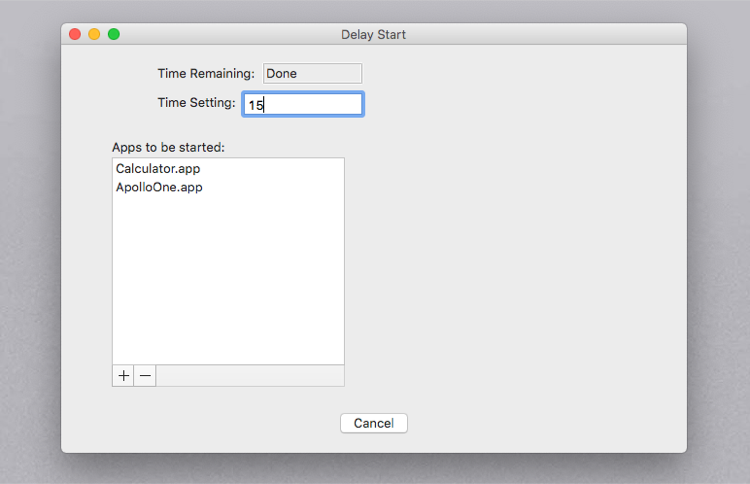

- #Limit mac startup programs how to#
- #Limit mac startup programs pro#
- #Limit mac startup programs software#
- #Limit mac startup programs windows#
For this reason, an operating system picker has been added to System Security Utility. This means that multiple installed macOS instances with different versions and security policies can exist on the same machine. Unlike security policies on Intel-based Mac computers, security policies on a Mac with Apple silicon are supported for each installed operating system. Startup Disk security policy control for a Mac with Apple silicon
:max_bytes(150000):strip_icc()/005-how-to-add-startup-items-to-mac-2260903-5415d1314895492d8a558cba8b9b2c8d.jpg) Privacy Preferences Policy Control payload settings. Dynamic WEP, WPA Enterprise, and WPA2 Enterprise settings. Kernel Extension Policy payload settings. Extensible Single Sign-On Kerberos payload settings. Extensible Single Sign-On payload settings. Exchange Web Services (EWS) payload settings. Exchange ActiveSync (EAS) payload settings. Conference Room Display payload settings. Certificate Transparency payload settings. Certificate Revocation payload settings. Certificate Preference payload settings. Autonomous Single App Mode payload settings. Active Directory Certificate payload settings. Automated Device Enrollment MDM information. Configure macOS for smart card–only authentication. Manage FileVault with mobile device management. Use a VPN proxy and certificate configuration. MacBook Air Wi-Fi specification details.
Privacy Preferences Policy Control payload settings. Dynamic WEP, WPA Enterprise, and WPA2 Enterprise settings. Kernel Extension Policy payload settings. Extensible Single Sign-On Kerberos payload settings. Extensible Single Sign-On payload settings. Exchange Web Services (EWS) payload settings. Exchange ActiveSync (EAS) payload settings. Conference Room Display payload settings. Certificate Transparency payload settings. Certificate Revocation payload settings. Certificate Preference payload settings. Autonomous Single App Mode payload settings. Active Directory Certificate payload settings. Automated Device Enrollment MDM information. Configure macOS for smart card–only authentication. Manage FileVault with mobile device management. Use a VPN proxy and certificate configuration. MacBook Air Wi-Fi specification details. #Limit mac startup programs pro#
MacBook Pro Wi-Fi specification details. iPhone, iPad, and iPod touch Wi-Fi specifications. Bundle IDs for native iOS and iPadOS apps. #Limit mac startup programs software#
Manage configurations and software updates. Identify an iPhone or iPad using Microsoft Exchange. Integrate Apple devices with Microsoft services. Manage content caching from the command line on Mac. Configure advanced content caching settings on Mac. Review aggregate throughput for Wi-Fi networks. Deploy devices with cellular connections. Add Mac computers to Apple School Manager or Apple Business Manager. Deploy devices using Apple School Manager or Apple Business Manager. It lets you disable or delay the startup entries. If you don’t want to go through a big Registry editing process, you can take the help of Quick Startup freeware. They are separate Registry files for the Current User and All Users – Run every time or run once. HKEY_CURRENT_USER\Software\Microsoft\Windows\CurrentVersion\RunOnce HKEY_LOCAL_MACHINE\Software\Microsoft\Windows\CurrentVersion\RunOnce HKEY_CURRENT_USER\Software\Microsoft\Windows\CurrentVersion\Run HKEY_LOCAL_MACHINE\Software\Microsoft\Windows\CurrentVersion\Run The registry keys are located at the following paths: 
You can use the Run or RunOnce registry keys to make programs run each time they log on or run just once.

You can edit the file of Registry Startup paths to add programs to start with every boot.
#Limit mac startup programs windows#
Use Registry Editor to make the Program run with Windows boot. Just copy the app shortcut and paste it into this folder. You can add shortcuts to any program which you want to start with Windows. You can easily access this folder by opening Run > shell: common startup and hit Enter. You can find out All Users Windows startup folder at:Ĭ:\ProgramData\Microsoft\Windows\Start Menu\Programs\StartUp You can directly access this folder by opening Run > shell: startup and hit Enter. Note: These programs’ start up is for the currently logged-in user only. The Current Users Startup folder in Windows can be found at:Ĭ:\Users\Username\AppData\Roaming\Microsoft\Windows\Start Menu\Programs\Startup By placing the Program shortcut in the Startup folder of Windows. In this process, there is no need for any third-party tool.
#Limit mac startup programs how to#
How to run any app on startup in Windows 10/8/7?īasically, there are two methods through which you can run any program when Windows boots into the Desktop.



:max_bytes(150000):strip_icc()/005-how-to-add-startup-items-to-mac-2260903-5415d1314895492d8a558cba8b9b2c8d.jpg)




 0 kommentar(er)
0 kommentar(er)
